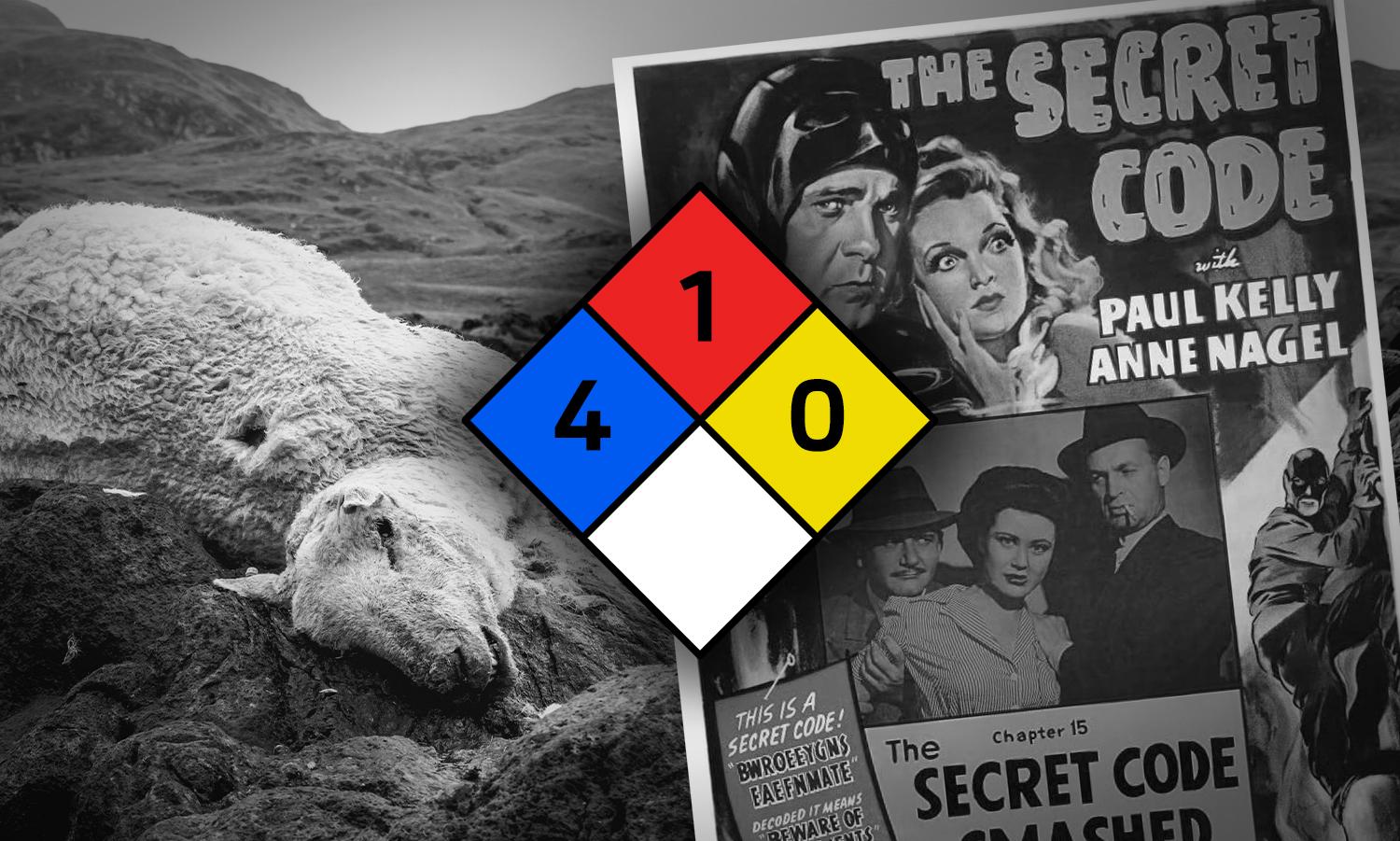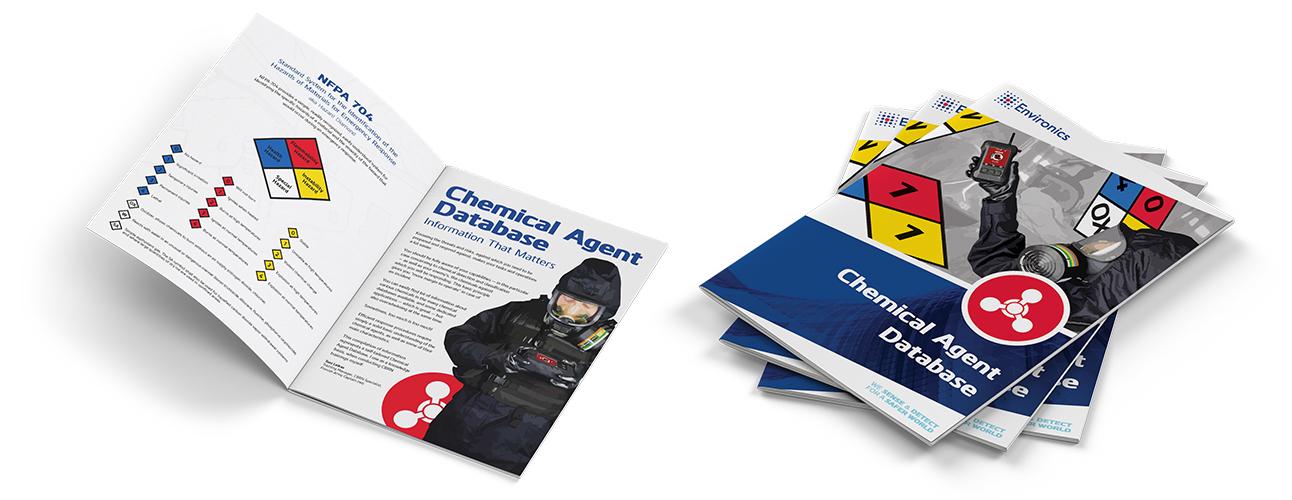The Secret Code:
V is for Venomous

Historical Backgournd
All traces led into the Plant Protection Laboratories of the Imperial Chemical Industries (ICI) UK, where British chemists Dr. Ranajit Ghosh and J.F. Newman discovered a quite effective pesticide. This new VG type formula patented in November 1952, was released to the market under the trade mark name Amiton™. However, it was subsequently withdrawn, as it was too toxic for safe use. British Armed Forces got interested in it the year after, and coded it as C11. After an evaluation process, a new nerve agent group was created: V-series (1955) with V standing for venomous. The best known V-series nerve agents is VX. Russians have an agent with a similar structure named VR or R-VX. VR is more advanced compared to common VX, because it gives a shorter time window for treatment after exposure.
UK traded VX information to the US, who has produced a large amount of VX between the years 1961-1968. The Soviet Union began to develop VR in the 1950s and by the 1970s they had produced more than 15,000 tons of this chemical agent. Iraq admitted research studies about VX, but stated that it hasn’t been weaponised.
An accidental release of open-air VX known as the “Dugway sheep incident“ or “Skull Valley sheep kill” related to the United States Army chemical and biological warfare programs took place at Dugway Proving Ground in Utah, and it’s believed to have been the cause of death of thousands of sheep in 1968. It is possible that VX or other nerve agents were used in chemical warfare during the Iran-Iraq War in the 1980s, but it’s not proven. In December 1994 and January 1995, Aum Shinrikyo synthesized 100 to 200 grams of VX which was used to attack three persons in Japan. VX was also used in the assassination of Kim Jong-nam (half-brother of Kim Jong-un, current leader of North Korea), which occurred on 13 February 2017 at Kuala Lumpur International Airport, Malaysia. VX was dumped in cloth which was used to cover Kim Jong-nam’s face. He died while being transferred from the airport to the hospital.
The only countries known to possess VX are the USA and Russia. Worldwide, VX disposal continues since 1997, under the mandate of the Chemical Weapons Convention.
Commercial Uses or Precursor Chemicals
VX has no use for peaceful purposes in commercial or industrial trades. The only known use of VX is as a chemical warfare agent. VX precursor chemicals are used in organic synthesis and insecticides.
Symptomatology
VX is classified as Nerve agent is military classification according its effects on humans. VX is a colourless or amber-coloured oily liquid in normal ambient temperature. This V-series nerve gas is odourless. VX is the least volatile of the “official’ nerve agents, which means it is the slowest to evaporate from liquid state into vapour form. VX is a non-volatile compound (NVOC) and very persistent. Under average weather conditions, VX can last for days on objects that it has contacted with. Under very cold conditions, VX can last for months.
VX is considered to be much more toxic when in contact with skin, and somewhat more toxic by inhalation. After exposure, symptoms may occur within a few seconds after exposure — if in vapour form — and within a few minutes to up to 18 hours after exposure — if in liquid form. Low dose exposure can be fatal, and immediate administration of an antidote is critical. As a nerve agent, VX interrupts the nervous system. Exposure symptoms are pinpoint pupils, runny nose, breathing difficulties, convulsions, sweating, nausea, vomiting, seizures, loss of consciousness, or even death.
Response
Leave area and evacuate the exposed people into fresh air. Even though the vapours will degrade fairly rapid, the liquid can persist on surface up to weeks.
VX is primarily a liquid exposure hazard, but if it is heated, it can turn into vapour (gas).
Remember that VX is heavier than air so it will accumulate in lower terrains, and settle in lower levels, or utility corridors inside the buildings.
For First Responders the protection level in an unknown situation is highest level.
In a small spill or leak (less than 200 litres) the initial isolation distance in all directions is 30 meters and the protection distance during day or night is 100 metres.
In a large spill/leak (more than 200 litres) the isolation area is 60 metres in all directions, and the protection distance during day is 400 metres, changing to 300 metres during night.
The following indicators are common to chemical attacks or presence of CWAs; dead animals, lack of insect life, mass casualties, defined pattern of casualties, casualty patterns differentiated by indoor and outdoor location, unusual liquid droplets, areas that look different in appearance, unexpected odours, low lying clouds and unusual metal debris.
All indications — smells, people’s symptoms — are clues to be taken into account with detection equipment, providing data to classify and identify the chemical, and to start response actions and first aid measures.
Did you know that the fact that VR (Russian VX, Soviet V-gas, Substance 33, R-33, Agent “November”) had too short shelf-life in combat conditions, had probably influenced the decision to continue the research on the Novichok-program, conducted by Russian CW developer Vil Mirzavanov?
Would you like to know more?

Get your own issue of the “Chemical Agent Database – Information
That Matters” and gain access to extra content!
I was shocked to discover that their are other classes of relatively simple chemicals that are as toxic as VX. Some of the bicyclic phosphates (e.g. TPBO) and their bioisosteres are as hazardous with 36 μg/kg being the median LD50 for the prototype I mention.
I believe the research was inspired by the accidental discovery of tetramethylenedisulfotetramine in 1940. It appears certain ‘cage compounds’ are potent GABA receptor antagonists.
I met a Swedish chemist in 2001 who vouchsafed that he had been involved in experiments with this class of toxin – working for the Swedish military.
I am aware that it’s permitted to produce small amounts of toxins to study safety and containment, but I have to note that NONE of the precursors to TPBO and it’s relatives is listed in the CWC as precursors and the immediate precursor is not complex to convert to the active.
Dear SW DUnlevy, You have good findings and thoughts about other toxic and dangerous chemicals. Thanks for sharing those. I think that OPCW conducts continuous investigations and monitors the development of substances and monitoring related to their use. I think that the substances will be transferred to the CWA precursor lists when the time comes.
thank you for sharing thes materials, the CBRN-e issue is constantly under a rapid evolution and your solutions and technologies give a huge step forward in order to keep subject-mater expert aware of the minute future developpements.
Again thank you .
With all my best regards.
Col (Ret) Brahim Bouha
Morocco.
Thank you Sir, for your comments.
Unfortunately, CBRNE is rising the concern during last few years.
We are all together making and securing that our societies to be safer nowadays and in future.
Toni